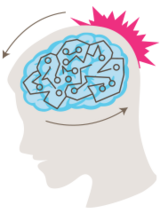Concussion Myths and Facts

Learn about some common concussion myths and get the facts about these misconceptions.
Myth: Helmets can prevent concussions.
Fact: While current helmet designs are effective for preventing skull fractures and some more serious brain injuries, they have not been shown to be effective at preventing concussions.
Myth: Children bounce back from concussion easier than adults.
Fact: Children, especially adolescents and young teenagers, may require longer recovery times and a more careful treatment for concussion than adults.
Myth: If your child didn't lose consciousness, they don't have a concussion.
Fact: Concussions can occur even when a child does not lose consciousness. Only 10·20% of children with concussions report being "knocked out."
Myth: You need a brain imaging test to diagnose a concussion.
Fact: Concussions affect brain function, not structure. A concussion can't be seen on a CT scan or MRI (an image of the structure of the brain).
Myth: A child with a diagnosed concussion should be woken up every couple of hours.
Fact: As long as a healthcare provider has ruled out more serious injuries, a child diagnosed with a concussion can sleep as much as they need.
Myth: Just play through the pain!
Fact: There is no gain from pain. You can delay recovery substantially or even cause longer-term consequences by continuing to play. Stay out of the game and take proper care of a concussion for the quickest route back to 100%.
Download an easy-to-read flyer that can be printed, shared, or hung up in homes, schools, offices, classrooms, etc. (Formatted to print at 11”x17” or 8.5”x11”)